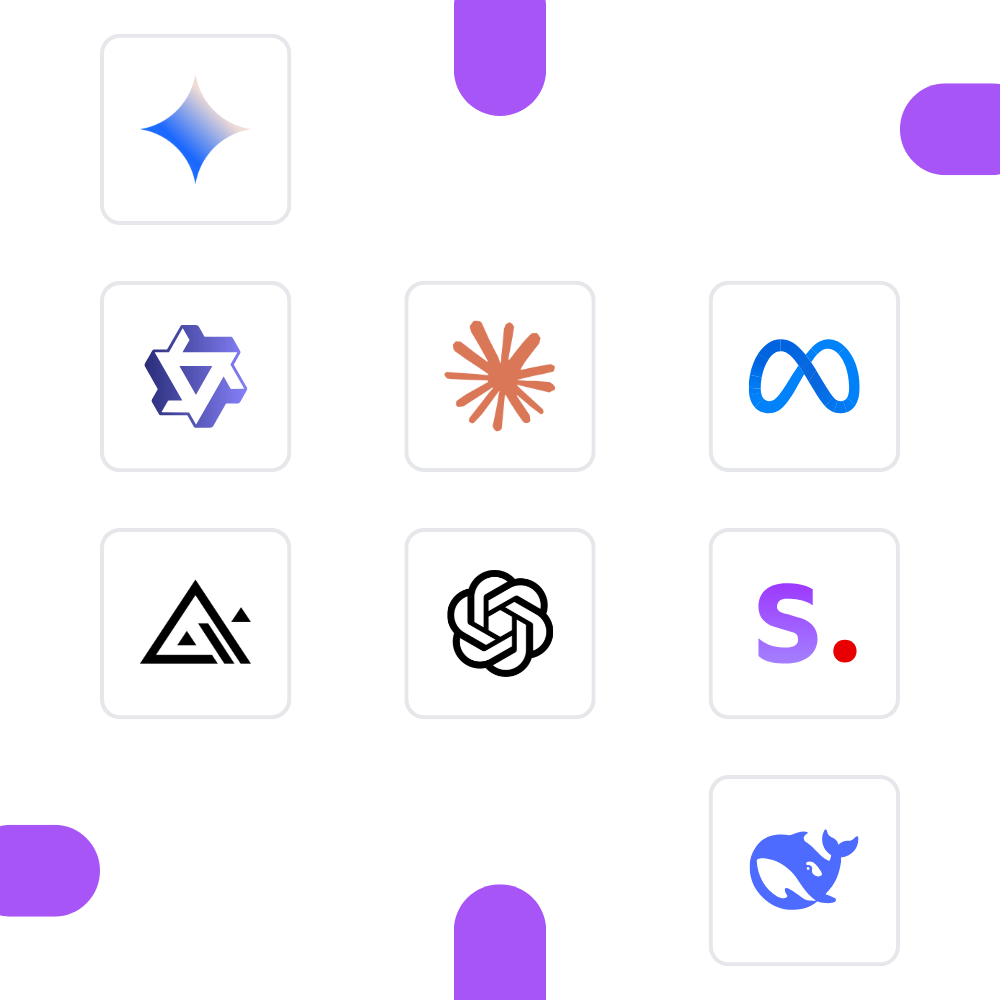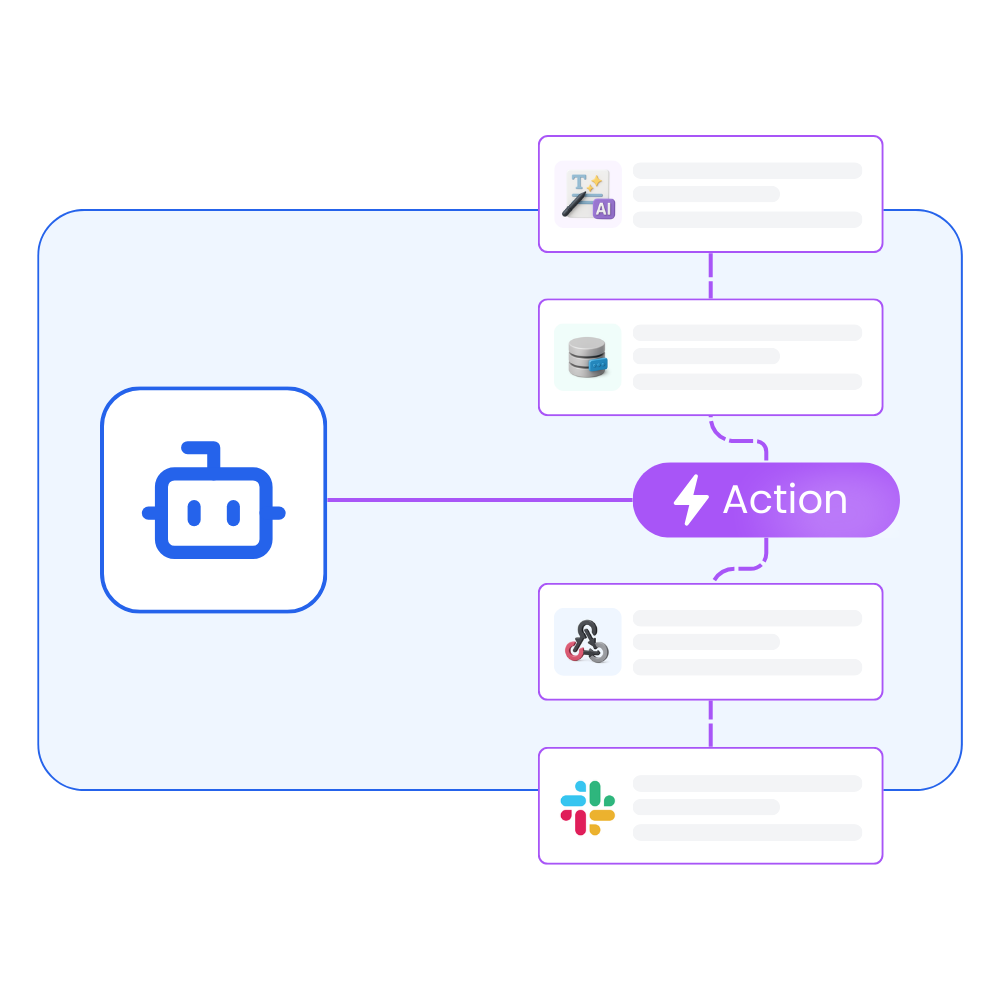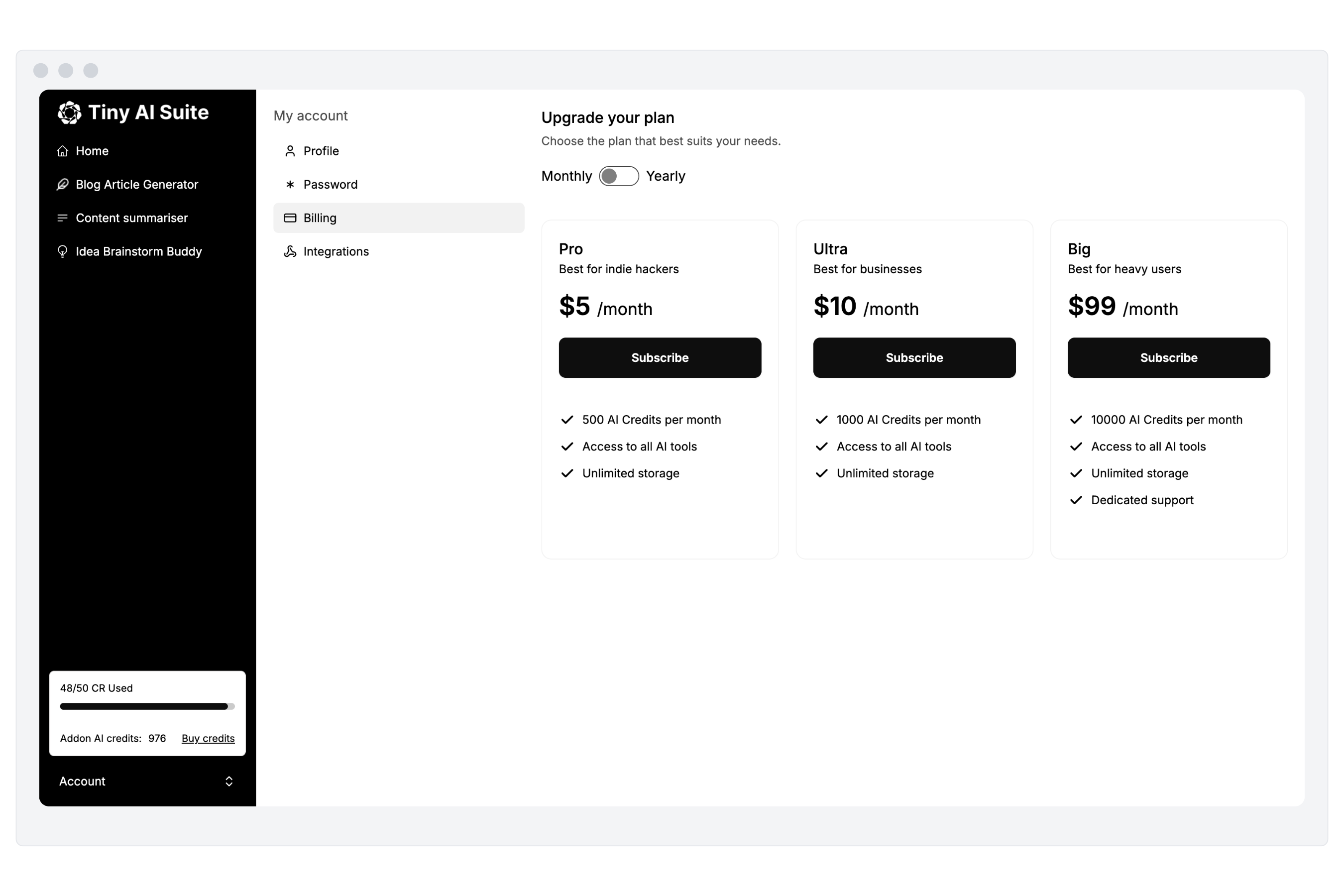o4-mini vs Gemini 2.5 Flash
Compare o4-mini and Gemini 2.5 Flash. Find out which one is better for your use case.
Model Comparison
| Feature | o4-mini | Gemini 2.5 Flash |
|---|---|---|
| Provider | OpenAI | |
| Model Type | text | text |
| Context Window | 200,000 tokens | 1,000,000 tokens |
| Input Cost | $1.10 / 1M tokens | $0.30 / 1M tokens |
| Output Cost | $4.40 / 1M tokens | $2.50 / 1M tokens |
Strengths & Best Use Cases
o4-mini
1. Fast and efficient reasoning
- Provides strong reasoning capabilities with significantly lower latency and cost compared to larger o-series models.
- Ideal for lightweight reasoning tasks, logic steps, and quick multi-step thinking.
2. Optimized for coding tasks
- Performs exceptionally well in code generation, debugging, and explanation.
- Useful for IDE integrations, coding assistants, and developer tools with tight latency budgets.
3. Strong visual reasoning
- Accepts image inputs for tasks such as diagram interpretation, charts, UI analysis, and visual logic.
- Great for hybrid text-image reasoning flows.
4. Large 200K-token context window
- Capable of processing long documents, multi-file codebases, or extended analysis.
- Reduces need for chunking or external retrieval pipelines.
5. High 100K-token output limit
- Supports lengthy reasoning sequences, full codebase explanations, or multi-section documents.
6. Broad API compatibility
- Available in Chat Completions, Responses, Realtime, Assistants, Batch, Embeddings, and Image workflows.
- Supports streaming, function calling, structured outputs, and fine-tuning.
7. Cost-efficient for production
- Lower input/output pricing makes it suitable for large-scale deployments, SaaS products, and recurring tasks.
8. Succeeded by GPT-5 mini
- GPT-5 mini offers improved speed, reasoning power, and pricing, but o4-mini remains a strong option for cost-sensitive workloads.
Gemini 2.5 Flash
1. Highly cost-efficient for large-scale workloads
- Extremely low input cost ($0.30/M) and affordable output cost.
- Built for production environments where throughput and budget matter.
- Significantly cheaper than competitors like o4-mini, Claude Sonnet, and Grok on text workloads.
2. Fast performance optimized for everyday tasks
- Ideal for summarization, chat, extraction, classification, captioning, and lightweight reasoning.
- Designed as a high-speed “workhorse model” for apps that require low latency.
3. Built-in “thinking budget” control
- Adjustable reasoning depth lets developers trade off latency vs. accuracy.
- Enables dynamic cost management for large agent systems.
4. Native multimodality across all major formats
- Inputs: text, images, video, audio, PDFs.
- Outputs: text + native audio synthesis (24 languages with the same voice).
- Great for conversational agents, voice interfaces, multimodal analysis, and captioning.
5. Industry-leading long context window
- 1,000,000 token context window.
- Supports long documents, multi-file processing, large datasets, and long multimedia sequences.
- Stronger MRCR long-context performance vs previous Flash models.
6. Native audio generation and multilingual conversation
- High-quality, expressive audio output with natural prosody.
- Style control for tones, accents, and emotional delivery.
- Noise-aware speech understanding for real-world conditions.
7. Strong benchmark performance for its cost
- 11% on Humanity’s Last Exam (no tools) — competitive with Grok and Claude.
- 82.8% on GPQA diamond (science reasoning).
- 72.0% on AIME 2025 single-attempt math.
- Excellent multimodal reasoning (79.7% on MMMU).
- Leading long-context performance in its price tier.
8. Capable coding assistance
- 63.9% on LiveCodeBench (single attempt).
- 61.9%/56.7% on Aider Polyglot (whole/diff).
- Agentic coding support + tool use + function calling.
9. Fully supports tool integration
- Function calling.
- Structured outputs.
- Search-as-a-tool.
- Code execution (via Google Antigravity / Gemini API environments).
10. Production-ready availability
- Available in: Gemini App, Google AI Studio, Gemini API, Vertex AI, Live API.
- General availability (GA) with stable endpoints and documentation.
Turn your AI ideas into AI products with the right AI model
Appaca is the complete platform for building AI agents, automations, and customer-facing interfaces. No coding required.

Customer-facing Interface
Create and style user interfaces for your AI agents and tools easily according to your brand.

Multimodel LLMs
Create, manage, and deploy custom AI models for text, image, and audio - trained on your own knowledge base.

Agentic workflows and integrations
Create a workflow for your AI agents and tools to perform tasks and integrations with third-party services.
Trusted by incredible people at
All you need to launch and sell your AI products with the right AI model
Appaca provides out-of-the-box solutions your AI apps need.
Monetize your AI
Sell your AI agents and tools as a complete product with subscription and AI credits billing. Generate revenue for your busienss.


“I've built with various AI tools and have found Appaca to be the most efficient and user-friendly solution.”

Cheyanne Carter
Founder & CEO, Edubuddy
Put your AI idea in front of your customers today
Use Appaca to build and launch your AI products in minutes.